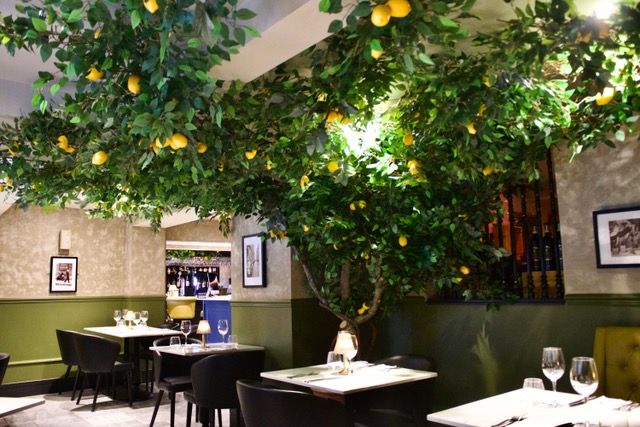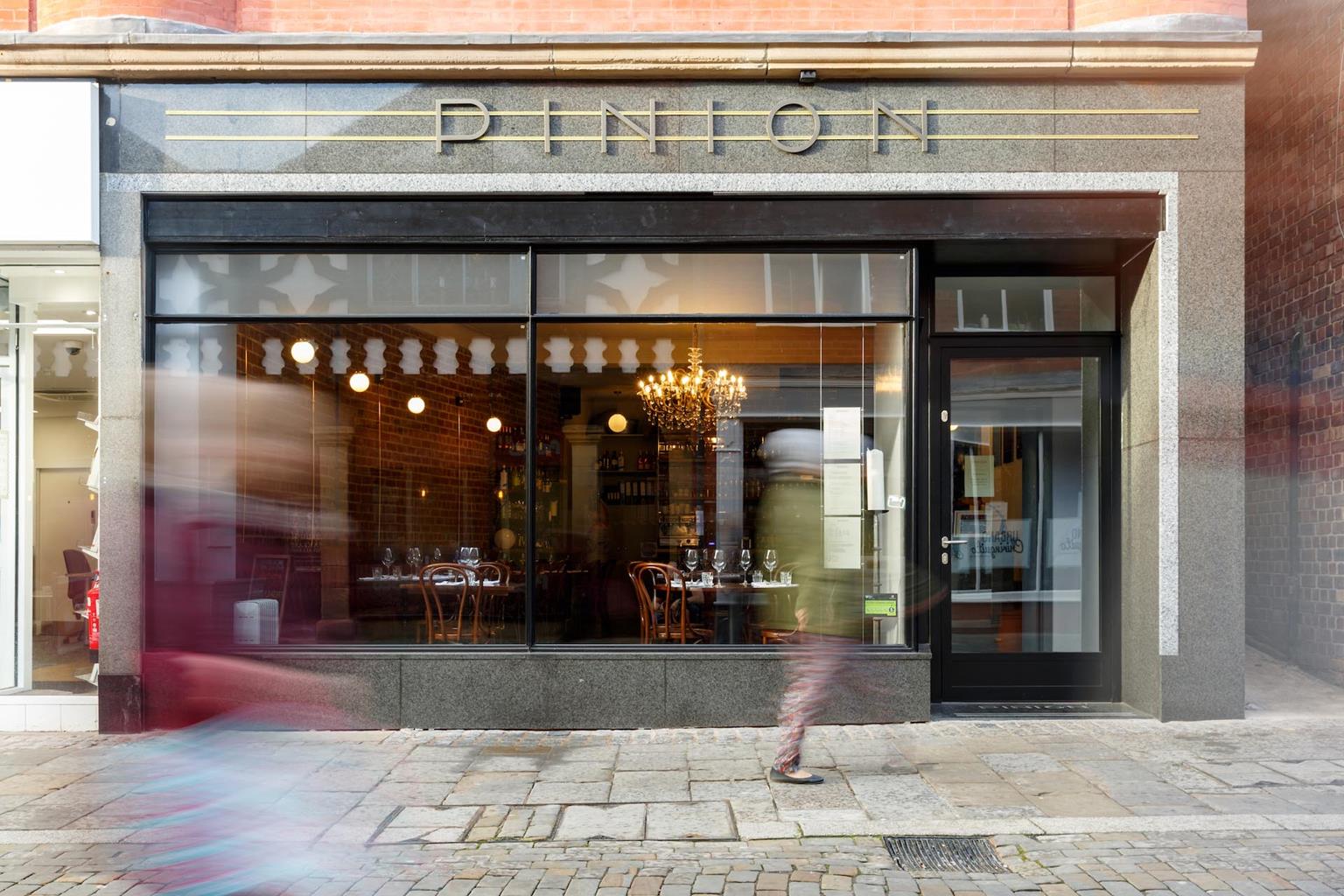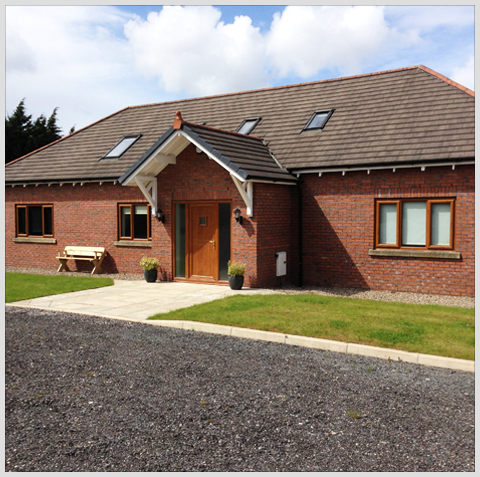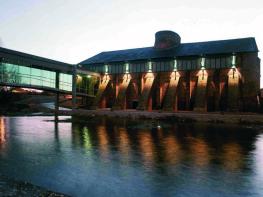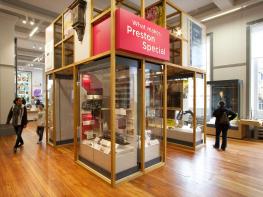Situated in open countryside close to the M6, this privately-owned hotel offers friendly…
Douglas Valley delights

A gentle yet surprising corner of Lancashire with some wonderful views, and it saves the best until last.
7.25 miles (11.7kms)
About the walk
They say West Lancashire is flat, and much of it is, but Lancashire is full of surprises. The walk starts with a slight ascent on to High Moor. Not that it is what we would call a moor today: the name dates back to before the Enclosure Acts. The gradual climb culminates on a wooded hill topped by the ruin of a windmill, which perhaps dates from the early 1600s but had become derelict by the mid-19th century. The best views, however, are revealed on the return, with a panorama stretching to the sea.
Napoleonic fear
Inland you look across the Douglas Valley to the ridge of Ashurst's Beacon which, incidentally, is another grand viewpoint. The beacon was built at the time of the Napoleonic wars, to carry warning of an invasion which many feared was imminent. It was never used.
Leeds and Liverpool Canal
The latter stage of the walk ambles into the Douglas Valley. Once this was a major communications corridor. First the river itself was improved for navigation in 1742. Then came the Leeds and Liverpool Canal. This was initiated by an Act of Parliament in 1770, but took 46 years to complete. The cost was, a then colossal, £1.2 million. It remains the longest single canal in Britain. It carried stone from local quarries – much of old Wigan is built of Parbold stone – and coal from the Lancashire coalfields.
As one of the later canals to be finished, its heyday was relatively brief. The railway between Wigan and Southport, which runs so closely parallel to the canal through the valley, was opened in the mid-l9th century. The canal declined but the growth of leisure boating brought a revival.
Fairy Glen
Having climbed up a little from the canal, and crossed a few fields, you come to the pièce de resistance, Fairy Glen. Its origins are largely natural, rather than supernatural, and there are traces of small-scale quarrying, but nevertheless there is a kind of magic about the place. Dappled sunlight gilds the rocks and waterfalls. The ground under the trees, depending when you go, may show lesser celandines and wood anemones, wood sorrel, or carpets of bluebells and wild garlic. Between June and September, especially in the lower reaches, there are drifts of white flowers on loose spikes called enchanter's nightshade – a member of the willowherb family and not related to deadly nightshade.
Walk directions
Leave the eastern end of the lay-by along a field-edge track. At the top corner, turn left beside the wall towards trees. Wind with Sprodley Brook to continue at the perimeter of the wood. Where the path later crosses the stream, head away, passing left of a field-pond. Bear right along a track to meet a lane.
You can short-cut the walk by going left. Otherwise keep ahead to High Moor Lane. Turn right, but immediately past High Moor Restaurant, leave left along a drive. After 600yds (549m), at a bend, bear right through a gate along a contained path. Reaching a junction by a wood, walk left, continuing beyond at the field-edge. Carry on past another wood, swinging right around its corner. Turn left in the next corner to a gate/stile onto the wooded heath crowning Harrock Hill. Bear left to find the windmill.
Continue beyond the ruin, moving left to join a wall into the corner of the wood. Over a stile on the left, a path drops to the right. Entering a field, carry on downhill. Exit at the bottom and follow a track ahead, skirting right past a farm to meet Jackson's Lane. Go left.
At the end, head left up Hunter's Hill. Opposite a house, a bridleway leaves on the right. Approaching a car park, take the first path off right, skirting a nature reserve, then descending beside a quarry. Just past the quarry gates, go left, climbing beside the perimeter fence. After 150yds (137m), watch for steps dropping to the field below. Head straight out, leaving left of cottages onto a lane. Climb left to a road beside the Rigbye Arms at High Moor. Walk right for 75yds (69m), then turn right along the drive to Stoney Bank House. Slip through the right-hand hedge to a parallel path, continuing through a gate onto a track (where the short cut joins).
Go right and bend left before a cottage, walking between hedges and then later across open fields to the corner of a wood. Over a stile on the left, head down beside a ditch, which shortly deepens to a clough. Carry on into woodland, finally dipping across the stream to climb to the A5209.
Walk left to a bend, crossing to a stile on the right. Head downfield, exiting onto a lane at the bottom. Turn right and first left, going over a level crossing to the canal. Over the bridge, drop left and follow the footpath to the right, away from the bridge.
Leave at the next bridge, cross and follow a winding track over the railway to a lane. Go right, briefly joining a contained path below houses before resuming the ongoing track. Beyond a wood, faced with gates, cross a stile on the right to another parallel path. Emerging into fields, head across to a stile into Delf Wood and Fairy Glen.
Follow the path left, over a bridge and up steps to a junction. Go left, later crossing a bridge and eventually climbing to a junction by another bridge. Stay on this bank past another junction, ultimately emerging onto the main road. The lay-by is to the right.
Additional information
Field paths and canal tow path, many stiles
Open fields, enclosed valley and wooded dell
Keep dogs under close control
OS Explorer 285 Southport & Chorley
Large lay-by on A5209
None on route
WALKING IN SAFETY
Read our tips to look after yourself and the environment when following this walk.
Find out more
Also in the area
About the area
Discover Lancashire
Lancashire was at the centre of the British cotton industry in the 19th century, which lead to the urbanization of great tracts of the area. The cotton boom came and went, but the industrial profile remains. Lancashire’s resorts, Blackpool, Southport and Morecambe Bay, were originally developed to meet the leisure needs of the cotton mill town workers. Blackpool is the biggest and brashest, celebrated for it tower, miles of promenade, and the coloured light ‘illuminations’. Amusements are taken very seriously here, day and night, and visitors can be entertained in a thousand different ways.
The former county town, Lancaster, boasts one of the younger English universities, dating from 1964. Other towns built up to accommodate the mill-workers with back-to-back terraced houses, are Burnley, Blackburn, Rochdale and Accrington. To get out of town, you can head for the Pennines, the ‘backbone of England’, a series of hills stretching from the Peak District National Park to the Scottish borders. To the north of the country is the Forest of Bowland, which despite its name is fairly open country, high up, with great views.
Nearby stays
Restaurants and Pubs
Nearby experiences
Recommended things to do
Why choose Rated Trips?
Your trusted guide to rated places across the UK
The best coverage
Discover more than 15,000 professionally rated places to stay, eat and visit from across the UK and Ireland.
Quality assured
Choose a place to stay safe in the knowledge that it has been expertly assessed by trained assessors.
Plan your next trip
Search by location or the type of place you're visiting to find your next ideal holiday experience.
Travel inspiration
Read our articles, city guides and recommended things to do for inspiration. We're here to help you explore the UK.

